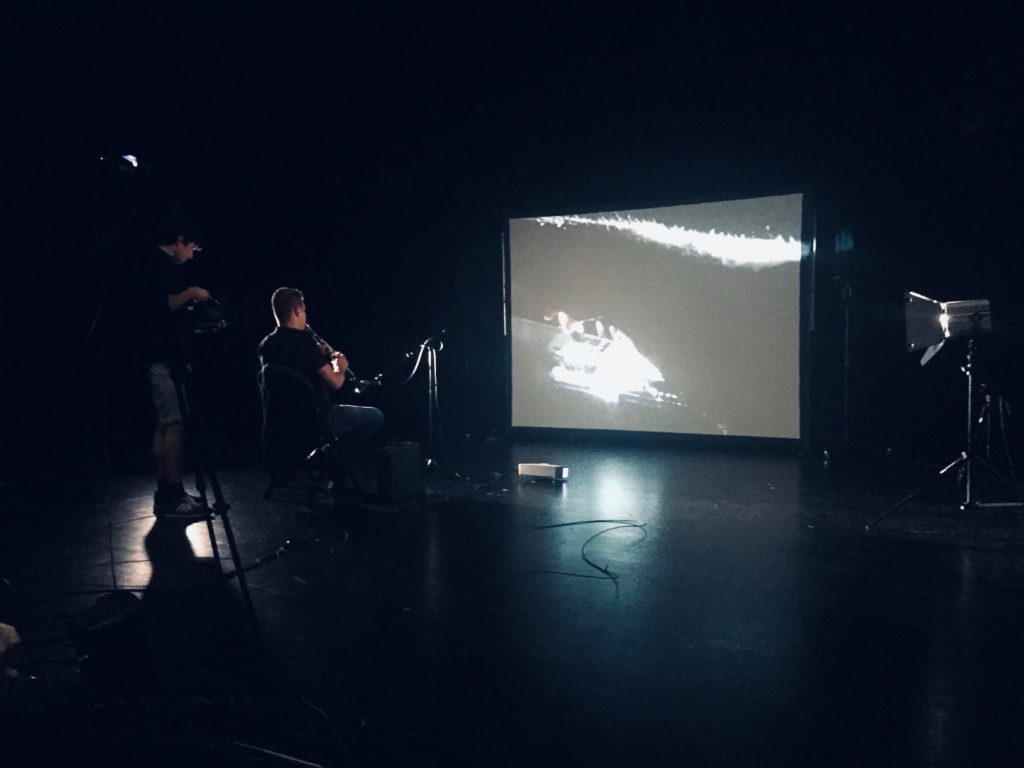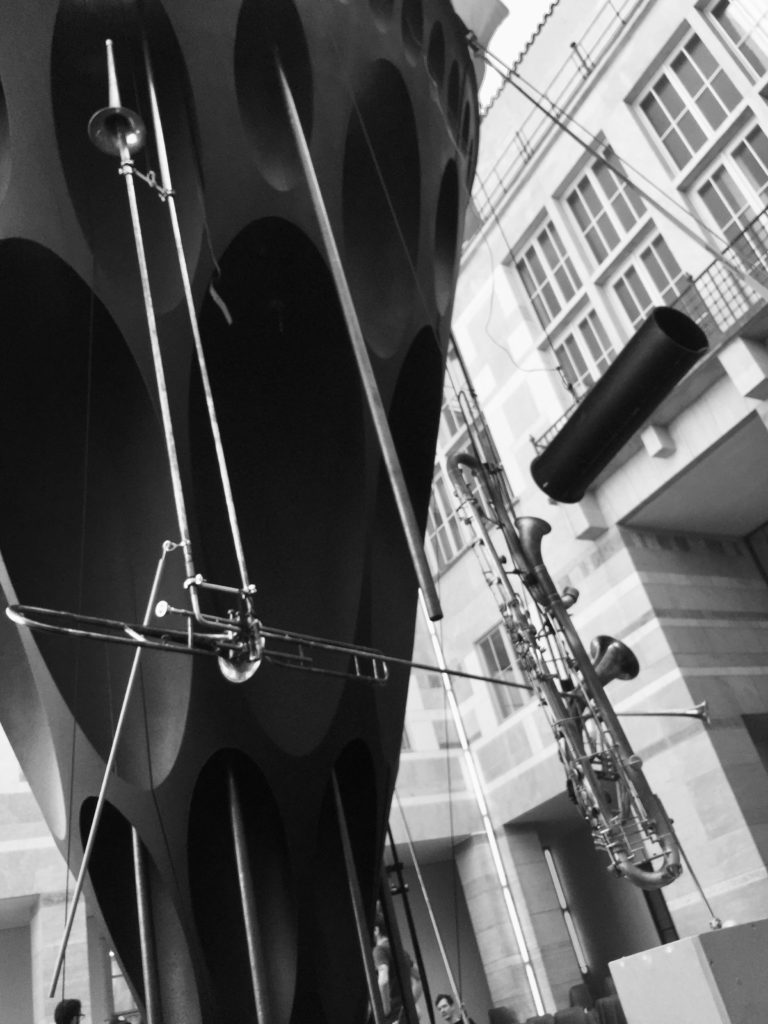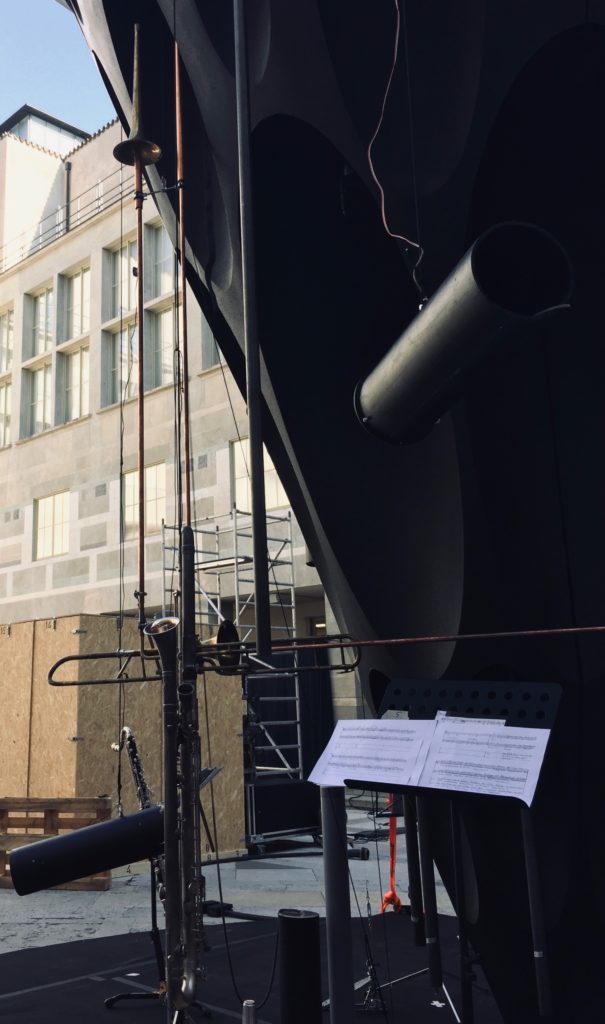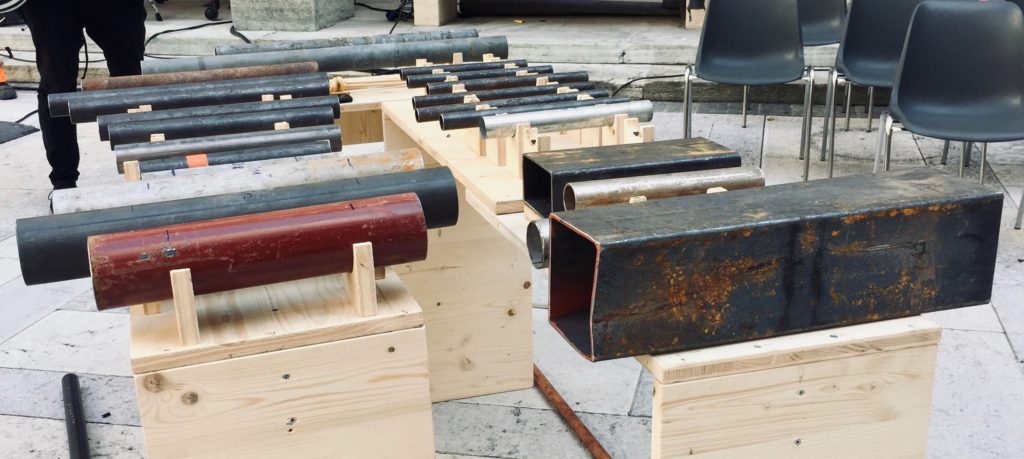The past few weeks have been quite a rush, running from here to there, getting registered with the cantonal authorities, getting registered with the Swiss authorities, attending mandatory orientation events, attending non-mandatory orientation events, meeting people, hustling, avoiding writing a paper that is due to a journal next week. All this is to say that I sadly haven’t been able to do much music making. That said, I have had the opportunity to hear and see some amazing music making.

First, I got to sit in and view several days of a Telematic music course hosted by the Transdisciplinary Program, which is my ‘home-base’ here at Zürcher Hochschule der Künste during my Fulbright. Led by Patrick Müller and Matthias Ziegler alongside a few assistants who were also drawn from the Transdisciplinary program, a small group of students explored the medium in a somewhat ‘local’ setting. I say local, because the latency that so defines Telematic music (and more generally much Networked Musics), was still present even as they were only transferring data between different rooms within ZHdK.

After meeting Matthias for the first time during the course, he told me that he was working on Nono’s Das Atmende Klarsein (for Bass Flute, Children’s Choir and Electronics) and had a rehearsal that evening. I kindly invited myself along because it seemed like it would be amazing to hear that work (at least the portions for flute and electronics) live. The rehearsal did not disappoint, and the bonus was that I learned of another event—this one in Basel—that seemed quite fascinating.

While chatting after the rehearsal, Germán Toro-Pérez told me and another Ph.D. student (Marcio) about his recently completed collaboration—essentially the building of a new instrument—and a concert work for that very instrument that were being premiered soon. I decided to take the train out to Basel to see the open rehearsal that was offered. Germán had designed feedback-tubes that were inserted into this upside-down, conical ‘klangturm’, or in English; ‘sound tower’. These feedback tubes could be put into use as electronic tracks for pieces, or as what I assume is a 33′ looped installation piece composed by one of the other artists. The whole visual design of the tower was very cool, and reminded me of a mix between the obelisk from 2001 and Jean Tinguely’s goofy kinetic sculptures (very fitting for Basel).

The obelisk explanation, I think, is self-evident: An imposing black structure that has descended from above (to put it in the courtyard of the Kunstmuseum Basel, they lifted it in via crane), while the Tinguely reference has to do with all the old wind instruments, bells, organ pipes, etc. that are sticking out from the structure of the ‘tower’.

One thing I found notable about all the music that was presented, was that almost all of the works featured hollow, tubular, resonating bodies. It was a nice programmatic touch, and all the works were fantastic to listen to, even though the artists were still polishing them up (open-rehearsals are like that).

Oh, also. Swimming in the Limmat after a hot day is the bomb.
